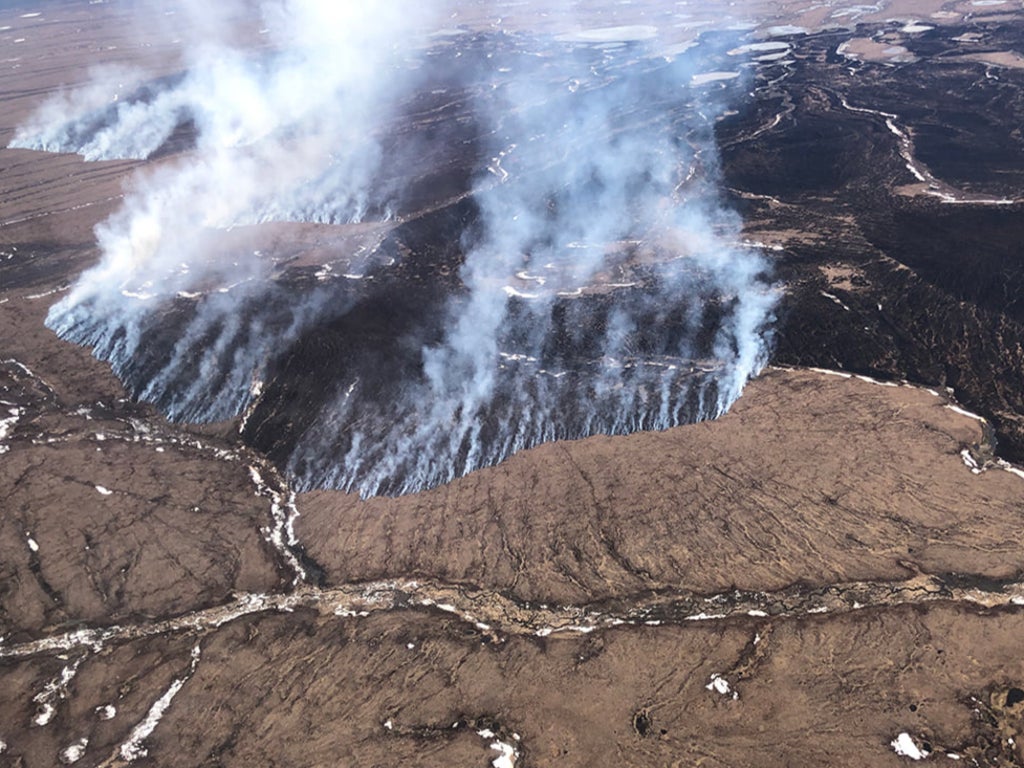
The largest wildfire in April in Alaska in more than a quarter century has reached nearly 10,000 acres.
The Alaska Division of Forestry is not currently taking any measures to fight the fire, which, on its current trajectory, is not threatening either the nearby town of Kewthluk or nearby Indigenous land. Still, the fire’s size is serving as another reminder of the immediate dangers of climate change as fire seasons across the country grow longer and more intense.
“I do see it. I see smoke. It’s visible at times,” Kwethluk resident Boris Epchook told Alaska Public Media.
Wind patterns have kept the fire, which is currently burning 25 miles southeast Kwethluk and spreading across the tundra to the southwest, away from the town. It is expected to continue burning until it runs out of dry brush or until it rains.
It is historically uncommon for Alaska to face such a large fire at this time of the spring. But the area around Kewthluk got a below average amount of snowfall over the winter which quickly melted, leaving the tundra open. A lack of rain this spring has further dried it out and made it difficult for vegetation to grow, further improving the fire conditions.
The fire was first reported to forestry officials on April 16, and has been burning since. The fire’s cause is not at this time known, though forestry division spokesperson Kale Casey said that the fire is likely human caused. Any decision to officially investigate its origins will be taken by the Yukon Delta National Wildlife Refuge.
According to the United Nations, the risk of catastrophic wildfires globally could increase by a third by the year 2050 — affecting not just the Western United States and Canada, but also Australia, India, the Amazon, and other regions.
Alaska is already being hit hard: forest fires in recent years have broken records in terms of intensity, with fire seasons in which more than a million acres are burned twice as frequent now as they were 30 years ago.







